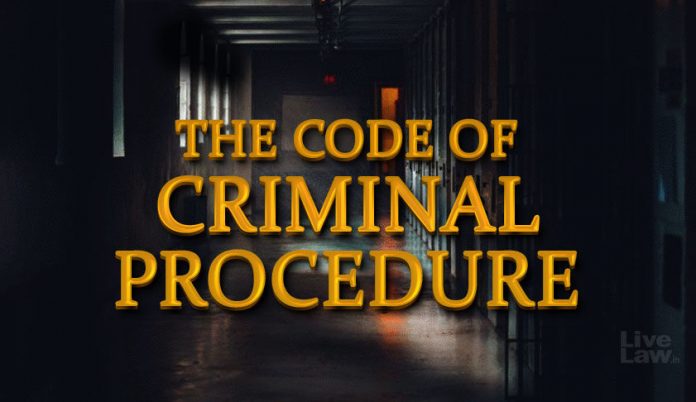This article was written by Mahesh P Sudhakaran, currently studying at KLE Society’s Law College, Bangalore and it covers all facets of Section 446 of the Code of Criminal Procedure.
This article has been published by Sneha Mahawar.
Table of Contents
Introduction
The law pertaining to bail is an important component of procedural law. Chapter XXXIII of the Code of Criminal Procedure, 1973 (Code) is concerned with the provisions related to bail. As stated in numerous landmark judgments, bail is the rule and jail is the exception. As per Article 21 of the Indian Constitution, no person shall be deprived of their right to life or personal liberty except through procedure established by law and it is also reiterated consistently as a matter of established practice that a person is to be presumed innocent until proven guilty. Taking these factors into consideration bail becomes an indispensable element to protect the essence of Article 21 and the rules relating to bail play an important role in the administration of justice while upholding the very spirit of the Constitution.
Bail has not been per se defined in the Code however, in common parlance, bail is understood as the process of obtaining the release of an accused who is charged with certain offences by ensuring his/her future appearance in the court for trial and compelling such person to remain within the jurisdiction of the court. One of the important elements of bail is the concept of bail bonds and the provisions governing the same. A bail bond is an arrangement carried out by an arrested suspect assuring an appearance for trial or payment of a certain sum in the form of security or guarantee of appearance. The amount for which bail is set is decided upon by the court, which is proportionate to the gravity of the alleged offence and as per the provisions of the Code. Hence the accused has to compulsorily comply with the bail bond and appear before the court.
The execution of bail bonds, forfeiture of the same, and its aftermath are common when it comes to criminal proceedings. The terms bail and bond are often used synonymously. These terms are interrelated but not the same. Bond is precisely the bondsman’s pledge to make good with regard to the conditions of bail in case the accused fails to appear before the court, while bail implies the temporary release of the accused, who awaits trial, by depositing a certain sum as collateral to assure that person’s future appearance at the court. The question here is, what would happen if the accused fails to adhere to the bail bond? This is termed as forfeiture of bond and it is governed by Section 446 of the Code. This article covers all aspects relating to the procedure when a bond is forfeited in detail.
What is a bond
A bail bond is a written document signed by the accused or his friends or family (known as surety) to assure that the accused will be present before the court at the stipulated time and date, as specified by the court. The bail amount is determined by the court, which is based on the gravity of the offence, and the amount is forfeited if the accused does not appear before the court on the stipulated trial date. A surety is a person who indemnifies or ensures the presence of the accused or offender in court on the date specified by the court. The surety pays on behalf of the offender for the purpose of a bail bond when the offender is deemed incapable of furnishing his personal bond. As per Section 440 of the Code, the amount of bond fixed by the court should be proportionate to the offence and should not be excessive. It is to be noted that this Section empowers the sessions courts and the High Courts to instruct the magistrate or the police officer to reduce the bail bond amount if deemed excessive. As per Section 442, the accused person will be released immediately once the execution of the bond is completed, and if he is in jail, the court shall issue an order of release to the officer in charge of the jail.
When is a bond required
A bail bond is required for the purpose of completing the bail procedure. In a situation wherein the court determines the amount of the bail and the accused is deemed incapable of paying such an amount by themselves, in such a scenario, the accused can seek the help of a bail bond agent or bondsman. The next stage here is based on the appearance or non-appearance of the accused before the court on the stipulated date. There can be two possible outcomes here:
Appearance of defendant
As per the conclusion or outcome of the court case, the dissolution of the bail bond is carried out, and the collateral is returned to the defendant or person who posted the same.
Non-appearance
In a scenario wherein the accused fails to appear before the court on the court-mandated date, the bail bond is deemed to be forfeited and the court demands payment of the bond amount. The accused will be allowed to show cause upon failure of appearance. In case the sufficient cause is not shown and the penalty is not paid, the court proceeds to recover the same as if such penalty were a fine imposed by it under the Code.
Forfeiture of bond and conditions leading to it
A particular court before it advances action as per Section 446 of the Code to recover the penalty has to be satisfied regarding the forfeiture of the bond. It is paramount that forfeiture must have been “proved” in due satisfaction of the court. Therefore, satisfactory proof pertaining to the forfeiture of a bond is essential with regard to the commencement of proceedings under Section 446 of the Code. Such proof must initiate the commencement of proceedings under Section 446 of the Code and without the same, proceedings under Section 446 of the Code cannot be set forth. The following steps can be identified leading up to the invocation of Section 446.
- An accused was set off on bail under the provisions of the Code.
- The bail bond was set on a court-mandated amount to ensure the appearance of the accused on a specified date.
- On the stipulated date, the accused fails to appear before the court.
- It is proved to the satisfaction of the court that the bond for appearance or production of property or any other bond has been forfeited.
- Initiation of proceedings on forfeiture of the bond.
What does Section 446 Code say about proceeding when a bond has been forfeited
As per Section 446 of the Code, when it is established that the bond has been forfeited, the court can call upon any person who is bound by that bond to pay the penalty or show cause why it should not be paid. If a sufficient cause for forfeiting is not proved or shown and the penalty therein is also not paid, the court can recover the same as if it was a fine imposed by a court under this Code as per Section 421. The court has the discretion to remit a specified portion of the penalty. When the accused is not present on the stipulated date as per the bond, then the accused has to showcase a good cause to justify his absence. The court will also record the grounds of proof with regard to the forfeiture of the bond. The following aspects can be derived based on Section 446:
- Section 446 of the Code lays down the procedure regarding the forfeiture of bonds. It basically refers to two classes of bonds:
- Any bond executed as per this Code for appearance or for production of property; and
- Any other bond under the ambit of this Code.
Both would stand on the same ground with respect to forfeiture.
- The proviso under sub-section (2) says that when the penalty is unpaid and cannot be recovered in the manner as laid down in Section 421 of the Code, the person who is bound as the surety will be deemed liable, by order of the court ordering the recovery of the penalty, to imprisonment in civil jail for a term up to six months.
- As per sub-section (3), the Court can remit any part of the penalty and enforce payment with respect to that particular part only.
- As per sub-section (4), in case the surety passes away before the forfeiture of bond i.e., conditions of the bond have not been violated till that very point, in that case, the surety’s property can be absolved from all liability with regard to the bond. But in a scenario wherein the surety dies after the forfeiture of the bond, the property of the surety can be deemed liable for penalty.
- As per sub-section (5), a certified copy of the judgment, which represents that the person who furnished security has been deemed guilty and convicted for breach of conditions of his/her bond can be used in the form of evidence against such person. Hence, in a situation wherein a person is convicted for breach of bond under the ambit of Sections 106, 117, 360 or 448 of the Code, a certified copy of the judgment would be used as evidence during the proceedings against the surety and shall act in a way it presumes such person’s liability unless proven otherwise.
Cancellation of Bond
Section 446A is concerned with the cancellation of the bond. The provisions of this Section do not influence the provisions pertaining to the forfeiture of the bond. The Hon’ble High Court of Rajasthan in the case of Johny Wilson vs State Of Rajasthan held that “It is true that forfeiture of the bail-bond does not amount to cancellation of bail. The legislature has not used the word “cancellation”. When a bond for the purpose of securing the appearance of a person in a case before the court is forfeited for breach of an expressly stipulated condition, then in such a scenario, the bond executed by the accused and sureties shall stand cancelled; and
Thereafter, the accused is not released on his personal bond in that case.
The proviso with respect to this section states that an accused can be released after the execution of a fresh personal bond for such sum of money and bond by one or more of such sureties as the police officer or the court deems fit.
Judicial pronouncements
These are some of the significant judgments concerning Section 446. They are discussed as follows:
Mohammed Kunju v. State of Karnataka,
In this case, the court considered various factors with respect to the liability of the surety under the ambit of Section 446 and made the following observations:
(i) Each surety is liable for a penalty in the forfeiture of the bond. Allotment of half a share is not legal;
(ii) Forfeiture of a bond would entail the penalty against each surety for the amount which he has undertaken in the bond executed by him. Both the sureties are not supposed to share the amount by half, as each surety is made liable to pay.
Mahmood Hasan v. State
In this case, it was held that an obvious requirement of the rule of natural justice is that a person against whom an adverse order is passed is given an opportunity of being heard. Therefore, before forfeiting the surety bond, the court should give notice to the surety to show cause as to why the surety bond should not be forfeited.
Dayal Chand v. State of Rajasthan
In this case, it was observed that when the court exercises discretionary power under Section 446(3), in such cases, it is not relevant to consider whether the surety acted irresponsibly and whether there was no connivance or negligence on the part of the surety.
C.M. Eisaw v. State of Karnataka
In this case, it was held that before a surety, whose surety has been forfeited, is imprisoned, a notice under Section 421 should be served on the Collector and if the Collector pleads inability to recover the amount, he should be sent to prison.
Jagtar Singh v. State of Punjab
The Punjab and Haryana High Court herein answered the question of whether a surety whose bond has been forfeited and who is unable to pay the penalty can be sentenced to imprisonment in the negative.
Conclusion
Bail is granted in order to uphold various constitutional principles and protect a person’s personal liberty. Bond in terms of bail is a crucial aspect of bail as it serves as a security that ensures the appearance of the accused before the court of law. Section 446 is paramount with regard to what the law entails when a bond is forfeited. It further provides the accused with an opportunity to show cause, as the bond is not deemed forfeited unless proven to the court in a satisfactory manner. This aspect of this provision respects the right of the accused to be heard, adhering to the principle of Audi Alteram Partem (hearing both sides), and ensures that the bail bond isn’t arbitrarily forfeited without providing the accused a chance of presenting his/her side.
References
- R.V. Kelkar’s Criminal Procedure.
- Ratanlal & Dhirajlal’s The Code of Criminal Procedure.
- https://www.shareyouressays.com/knowledge/procedure-when-bond-has-been-forfeited-section-446-of-Code/119515
- https://www.latestlaws.com/articles/everything-bail-bonds-bond-forfeiture-consequence-thereof-rakesh-kumar-singh
- https://lawcorner.in/what-is-the-procedure-on-forfeiture-of-a-bond/
- https://www.legalserviceindia.com/legal/article-5231-bail-bond.html
- https://lawrato.com/legal-documents/bonds-legal-forms/bond-and-bail-bond-under-CrPC-1973-after-arrest-under-a-warrant-5
- https://www.ourlegalworld.com/bail-provisions-as-to-bail-and-bonds/
- https://www.thekeepitsimple.com/difference-between-bail-and-bond/
Students of Lawsikho courses regularly produce writing assignments and work on practical exercises as a part of their coursework and develop themselves in real-life practical skills.
LawSikho has created a telegram group for exchanging legal knowledge, referrals, and various opportunities. You can click on this link and join:
Follow us on Instagram and subscribe to our YouTube channel for more amazing legal content.













